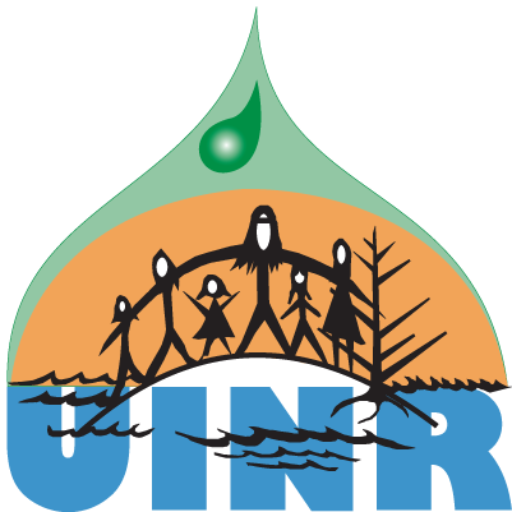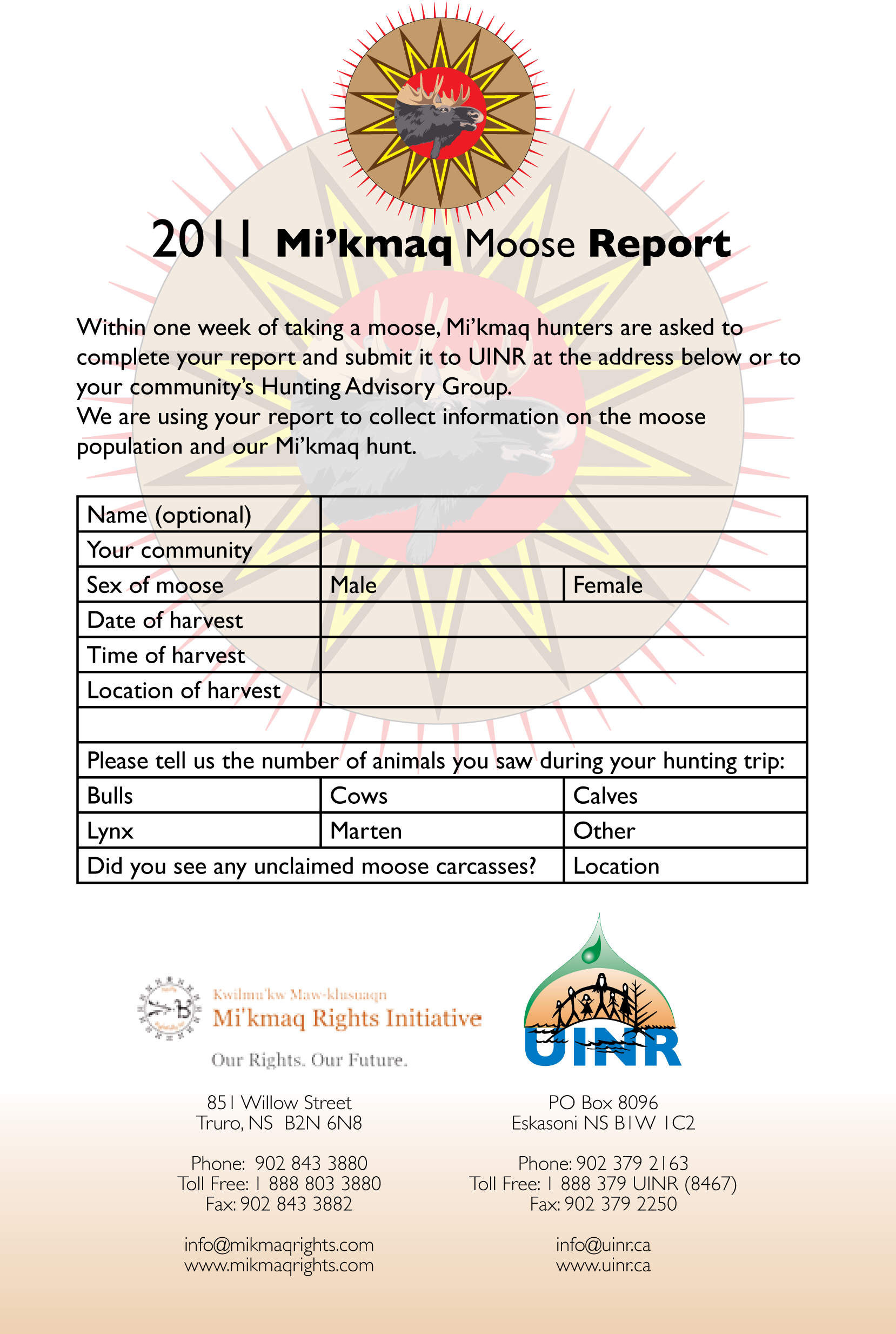Moose harvest time approaches and another season has stealthily crept upon us. For many it signals the need to reflect upon and experience the splendour and beauty of the Cape Breton Highlands.
Clifford Paul, Moose Management Coordinator at UINR explains “As we partake in our yearly harvest of moose, it is universally recognized by hunters, anglers, and outdoor enthusiasts alike that it is a true virtue to be a part of the northern Unama’ki landscape this time of year. Moose have raised their calves to a healthy size, blueberries are in abundance–and with that, bears too! Trout are feeding voraciously, coyotes are on the move, and the cool evenings make camping even that much more enjoyable–a good excuse to be telling our stories around a nice crackling fire. Summer gives way to the Fall and somewhere in between, Mi’kmaq Summer occurs. It is a time of seasonal change, a transition that is very much anticipated by Mi’kmaq harvesters and their families.”
In the spirit of transition, now is the time for harvesters to consider the importance of hunter reporting to help strengthen Mi’kmaq management initiatives around one of our most valuable natural resources–moose.
Over the past number of years, Mi’kmaq harvesters, community members, Elders and youth alike have expressed a desire for more community input into the management of our hunting activities; management of moose ecosystems; and the overall management of the herd. These initiatives, successfully garnered through a series of community meetings, spirited discussion, and a renowned Mi’kmaq Symposium on Moose, have led to more involvement in management practices. This has led to a renewed Mi’kmaq re-emergence in natural resource management–at a time when Mi’kmaq are naturally retaking our roles as stewards over our natural resources–especially as it pertains to moose and moose habitat.
Harvester reporting is the next big step. Why is reporting so important, you may ask. The answer is simple. Mi’kmaq information around the resource and the reporting of moose kills and sightings are key pieces of the management puzzle. Mi’kmaq input in this regard is a missing piece. It outlines the needs of the communities and greatly determines population trends in harvesting areas. Reporting serves to protect the rights of the harvesters by protecting the health (and ecosystems) of the moose. Certainly, the herd is healthy; however with limited abundance in certain areas, our information is especially helpful if we develop a system that formalizes our observations in the field.
It is optional for our harvesters to even sign their name on the form and one could just fill in the other fields including your community; sex of the moose; date of harvest; time and location of harvest; animals taken; animals seen. Forms can be picked up at your local band office, Kwilmu’k Maq-klusuaqn Negotiations Office (KMKNO) in Millbrook. They can also be downloaded here: Moose Harvesting Form 2011. Forms will also be handed out in the Highlands. Please give it a try, and perhaps if you decide to fill in your name, you may even win a prize.
Completed forms can be passed in at your local band office, UINR in Eskasoni, KMKNO in Millbrook or to any members of your community Hunter Advisory Groups. Please have a safe, enjoyable, and successful harvest.
This initiative strengthens our roles responsibilities in resource management, Mi’kmaq governance, and the implementation of Mi’kmaq treaty rights. In partnership with KMKNO, the Moose Management Initiative continues to promote a strong Mi’kmaq stewardship model in natural resource management.

